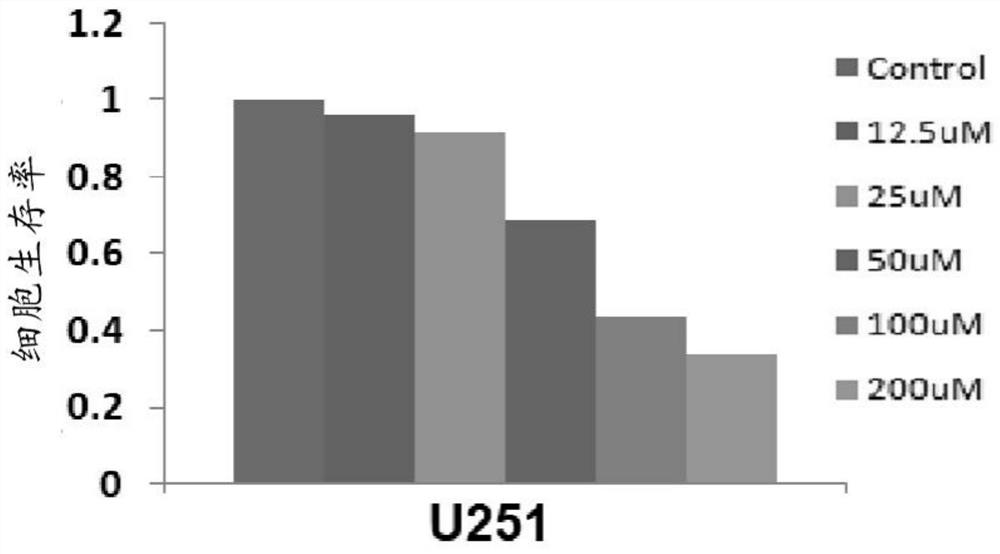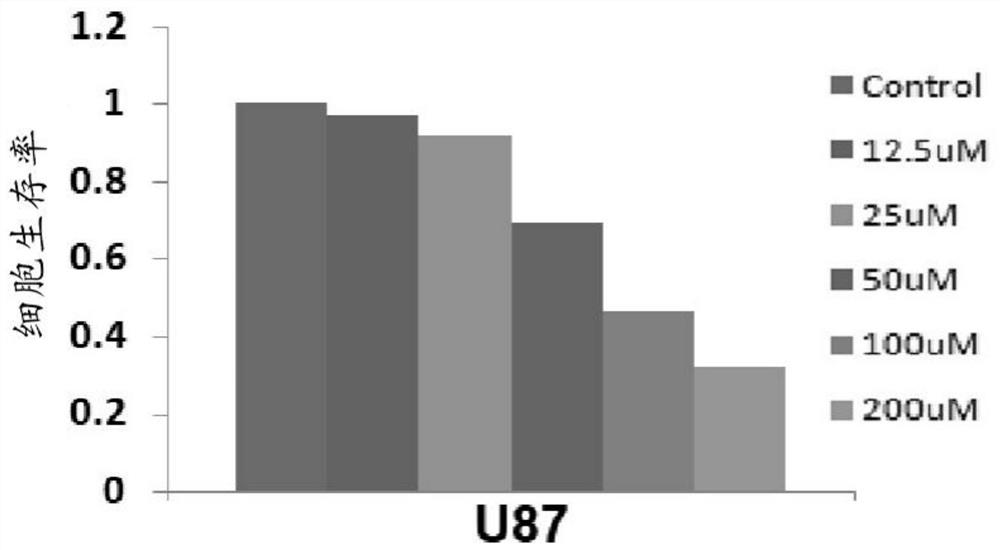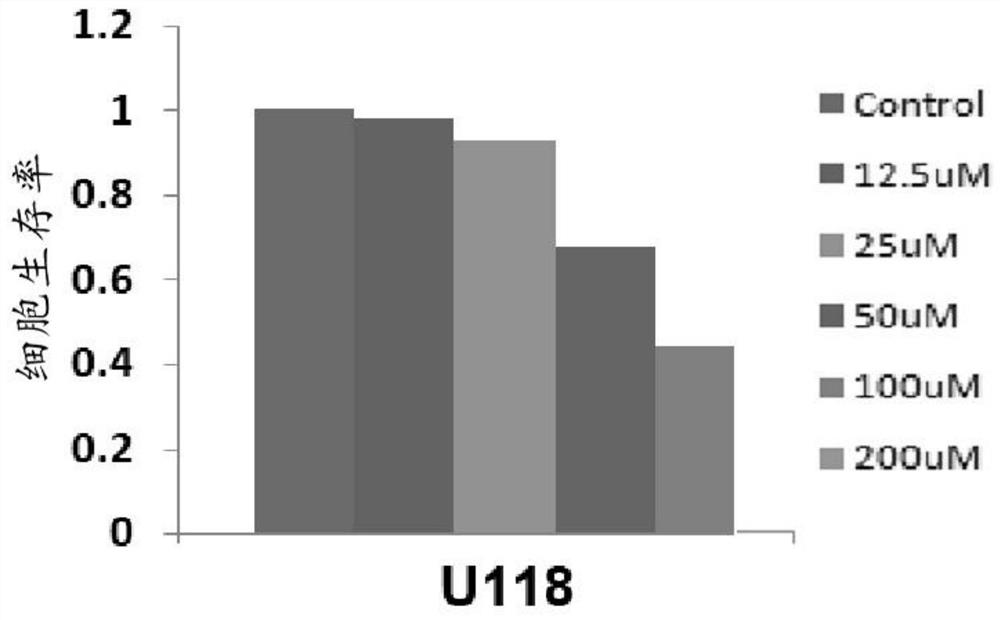Application of pseudolaric acid in preparation of medicine for preventing and/or treating malignant tumors
A technique for malignant tumor and hibiscus bark, which is applied to the application field of hibiscus bark propionic acid in the preparation of drugs for preventing and/or treating malignant tumors, and can solve the problems of unclear usage of Hibiscus bark propionic acid and unclear mechanism of action.
- Summary
- Abstract
- Description
- Claims
- Application Information
AI Technical Summary
Problems solved by technology
Method used
Image
Examples
Embodiment 1
[0035] Example 1 Inhibitory effect of fenugreek propionic acid on the proliferation of human glioma cells
[0036] The human brain glioma cells U251, U87 and U118 were inoculated in DMEM medium in 96-well plates, and incubated with carbon dioxide overnight. , 50umol / L, 100umol / L, 200umol / L) after incubation for 48 hours, the MTT method was used to detect the cell proliferation ability, and the results were as follows figure 1 As shown in Table 1, the survival rates of U251 cells were 96.67%, 91.97%, 68.75%, 43.59% and 34.05%, respectively; figure 2 As shown in Table 2, the survival rates of U87 cells were 97.19%, 91.73%, 69.27%, 46.51% and 31.94%, respectively; image 3 As shown in Table 3, the survival rates of U118 cells were 98.36%, 93.04%, 67.57%, 44.42% and 34.60%, respectively.
[0037] The detection results showed that the survival rate of glioma cells decreased correspondingly with the increase of the concentration of propionic acid in hibiscus. It was confirmed th...
Embodiment 2
[0044]Example 2 Toxicity of fenugreek propionic acid to normal cells
[0045] In order to detect the toxic effect of hibiscus propionic acid on normal cells, in this experiment, human umbilical vein epithelial cells HUVEC were inoculated into DMEM medium in a 96-well plate, and incubated with carbon dioxide overnight in a carbon dioxide incubator. (12.5umol / L, 25umol / L, 50umol / L, 100umol / L, 200umol / L) after incubation for 48 hours, the cell proliferation ability was detected by MTT method, and the results were as follows Figure 4 As shown in Table 4, the survival rates of HUVEC cells were 100%, 99.15%, 95.84%, 89.80% and 82.42%, respectively.
[0046] The detection results showed that compared with the survival rate of human glioma cells U251, U87 and U118, the 25umol / L and 50umol / L hibiscus propionic acid were less toxic to human umbilical vein epithelial cells HUVEC, At the same time, it can effectively kill human glioma cells.
[0047] Table 4 Inhibitory effect of hibisc...
Embodiment 3
[0049] Example 3 Study on the mechanism of killing of human brain glioma cells by fenugreek propionic acid
[0050] (1) Activation of autophagic flux in human glioma cells by propionic acid
[0051] In order to elucidate the mechanism of hibiscus propionic acid on human glioma cells, in this experiment, 50umol / L hibiscus propionic acid was incubated with human glioma cells U87 for 6, 12, 24 and 48 h, and the protein was extracted. Then, Western blotting method was used to detect the expression of autophagy-related proteins, and the results were as follows Figure 5 As shown, hibiscus propionic acid can up-regulate the expression of protein ATG5 and protein LC3B II in a time-dependent manner, while correspondingly inhibiting the expression of autophagy substrate protein P62. The red-green tandem fluorescent LC3B protein particles were transfected into human brain glioma cells U87 by lentivirus, and it was further verified whether fenugreek propionic acid induced autophagy. Th...
PUM
 Login to View More
Login to View More Abstract
Description
Claims
Application Information
 Login to View More
Login to View More - R&D
- Intellectual Property
- Life Sciences
- Materials
- Tech Scout
- Unparalleled Data Quality
- Higher Quality Content
- 60% Fewer Hallucinations
Browse by: Latest US Patents, China's latest patents, Technical Efficacy Thesaurus, Application Domain, Technology Topic, Popular Technical Reports.
© 2025 PatSnap. All rights reserved.Legal|Privacy policy|Modern Slavery Act Transparency Statement|Sitemap|About US| Contact US: help@patsnap.com



